Cooking a prime rib standing rib roast, might seem like a daunting, intimidating task, especially when dealing with a piece of meat that's both luxurious and expensive. This Garlic Butter Prime Rib recipe is here to walk you through every step of the process, from selecting the right cut to achieving a flawlessly cooked roast with a perfectly seasoned crust.
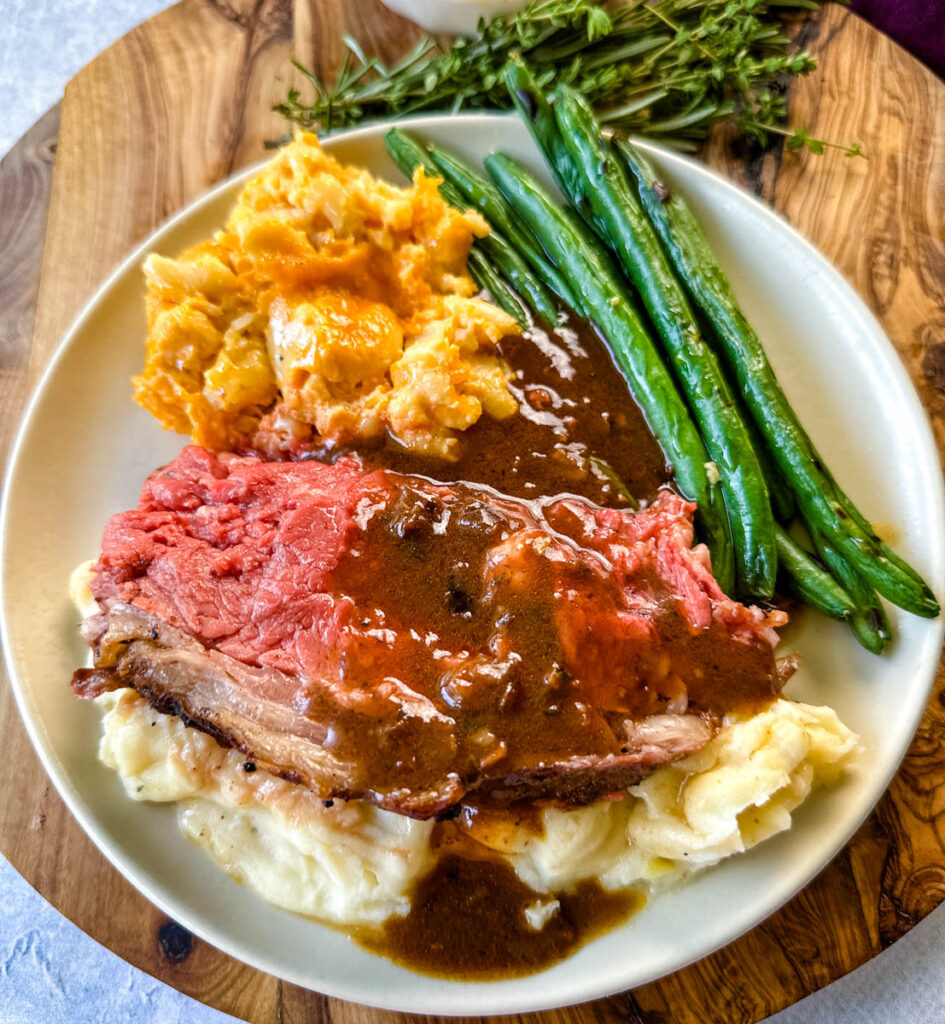
This post contains affiliate links. Please read my full disclosure here.
Whether you're a novice beginner in the kitchen or a seasoned home cook looking to conquer Christmas dinner or a holiday meal, this easy recipe has you covered.
What is the secret to making perfect prime rib? Patience and preparedness. You can't be in a rush to make this dish. But that's it! The steps you take to cook it are so easy! As long as you have a meat thermometer and a little patience, you will master this dish!
Table of Contents
What Type of Meat to Buy
You will want to choose a high-quality cut of beef that is well-suited for this classic and luxurious roast. The term "prime rib" actually refers to the specific cut of meat, which is taken from the rib primal of the beef carcass.
It's a highly flavorful cut of beef that comes from the rib section of the cow. It is often considered one of the most sought-after cuts due to its tenderness, marbling, and rich flavor. Prime rib is also known as a "standing rib roast" because it is typically roasted in the standing position, with the ribs attached.
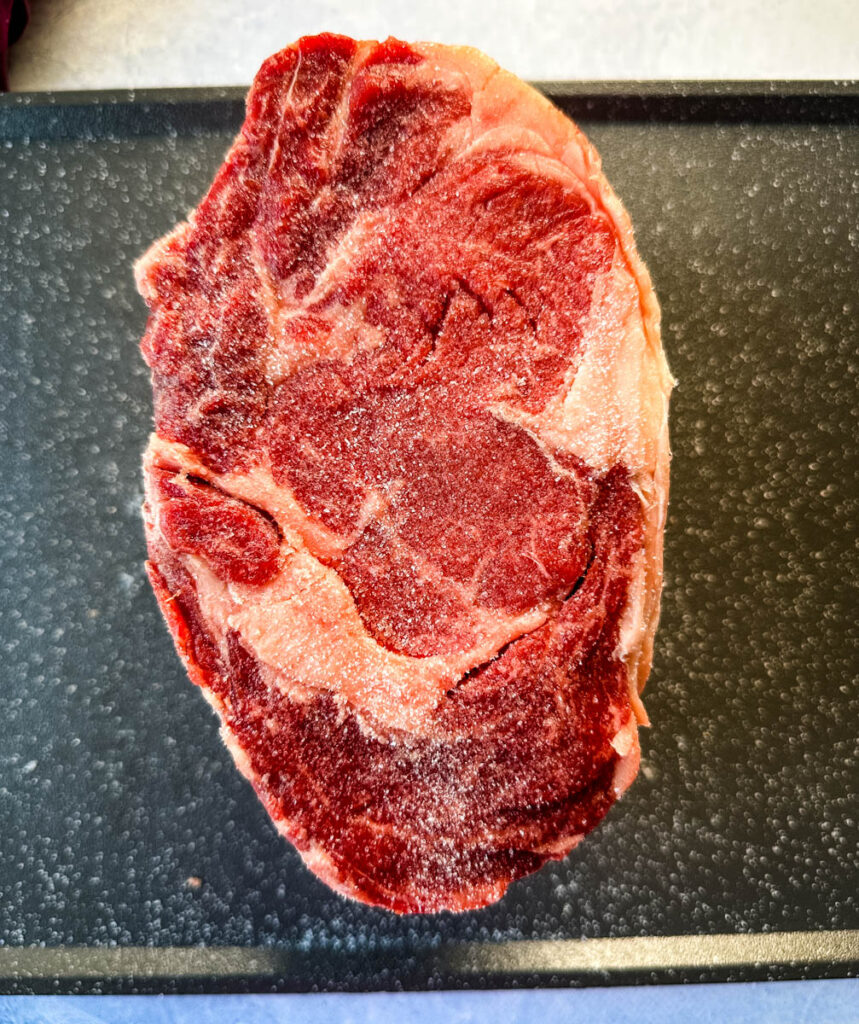
How to Shop
- Cut of Meat: Prime rib is taken from the rib section of the beef. The rib section typically contains bones, and a roast can include multiple rib bones, usually ranging from two to seven ribs.
- Quality Grade: Look for beef that is labeled as "prime" or "choice." These are the highest quality grades, with "prime" being the top grade. "Choice" is still excellent and offers good marbling and tenderness. Sometimes you can't find this, but if you can't find prime it just means the roast will have less fat.
- Marbling: Marbling refers to the intramuscular fat that is distributed throughout the meat. More marbling generally results in a juicier and more flavorful roast. Look for a prime rib with even marbling for the best results.
- Bone-In or Boneless: You can choose between a bone-in prime rib, which offers added flavor from the bones, or a boneless prime rib for ease of carving.
- Size: The roasts can vary in size based on the number of ribs and the weight. See notes below on sizing.
- Butcher's Expertise: If possible, visit a reputable butcher or meat counter where the staff can guide you in selecting the right cut and provide recommendations based on your preferences.
- Order in Advance if Possible: This is often considered a special occasion dish, so it's a good idea to place an order with your butcher in advance, especially during holidays or peak seasons.
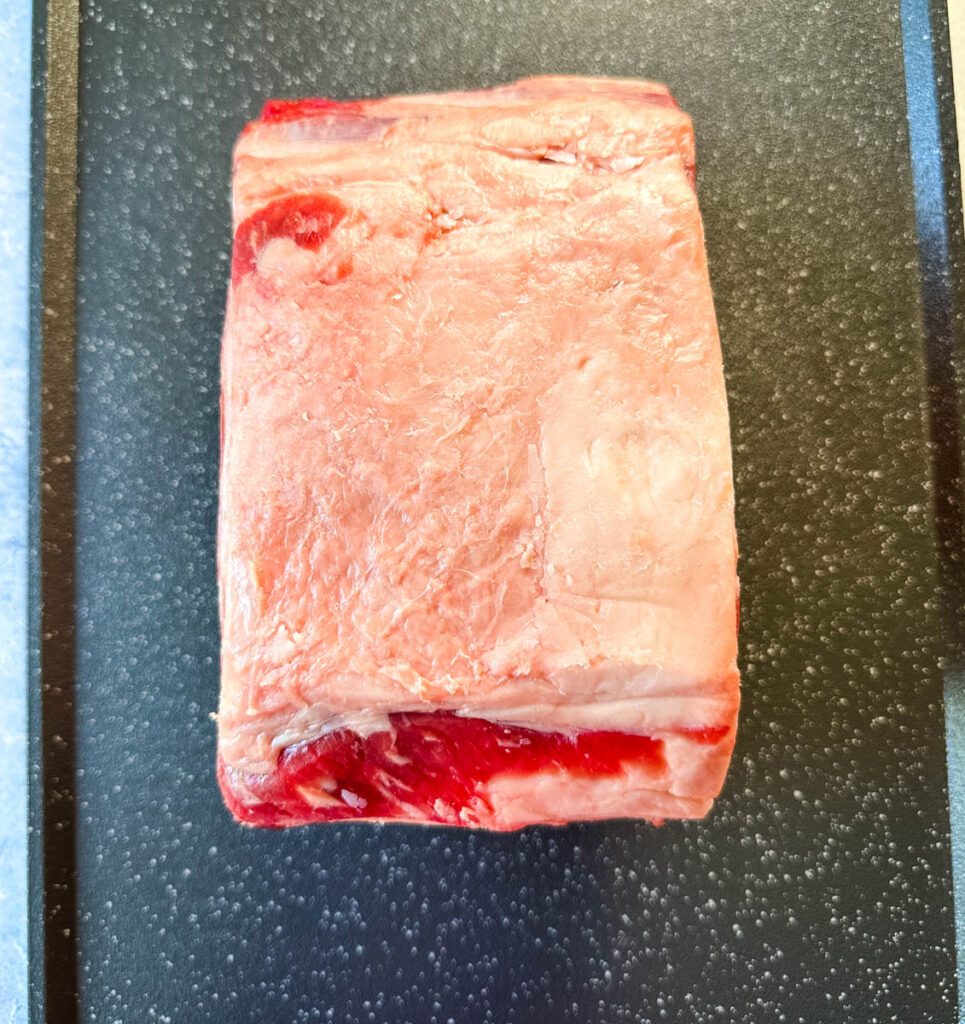
Bone-in vs Boneless
Bone-in:
- Flavor: Cooking meat with the bones intact will enhance the overall flavor of the roast. The bone imparts additional richness and depth to the meat as it roasts.
- Juiciness: The bones help retain moisture within the meat during cooking, contributing to a juicier and more succulent result.
- Presentation: A bone-in prime rib looks gorgeous and will make it an impressive centerpiece for special occasions or gatherings.
- Carving: The bones can serve as a guide when carving.
- Longer Cook Time: Cook time can take a little longer due to the bones' presence, but the additional flavor and moisture retention are often worth it.
- Cost: Bone-in can be more expensive per pound than boneless, partly due to the weight of the bones.
Boneless:
- Ease of Carving: Boneless is simpler to carve since you don't have to work around the bones. This can be especially beneficial if you're not comfortable with carving meat.
- Shorter Cook Time: It generally cooks a bit faster than bone-in, as there are no bones to slow down the cooking process.
- Uniform Slices: Carving can result in more uniform slices, which can be desirable for presentation.
- Lower Cost: It is often less expensive per pound than bone-in, making it a budget-friendly option.
Ultimately, the choice between bone-in and boneless depends on your preferences, the cooking experience you want, and the occasion. Both options can yield great results.
What Size to Buy/How Much You Will Need
A good rule of thumb is to plan for about ½ to 1 pound of raw meat per person. This takes into account the weight of the bones, fat, and any shrinkage that occurs during cooking. If you want leftovers or have hearty eaters, you might opt for the higher end of this range.
Prime rib is often sold based on the number of ribs in the roast. Each rib generally serves 2 to 3 people, depending on the size of the ribs and the appetites of your guests. A 3-rib roast is a good starting point for 6 to 8 guests, while a 4-rib roast can serve around 8 to 10 guests.
Do You Have to Marinate
Marinating is not necessary due to the cut's inherent tenderness and flavor. It is already quite flavorful on its own, thanks to its marbling and high-quality meat. One thing you can do (optional) is sprinkle Kosher salt or sea salt all over the roast and store it in the fridge the night before you cook it.
This will allow the salt to penetrate the meat overnight. This is optional.
Room Temperature Meat
When cooking beef (pretty much any meat, including salmon!), you need to allow the meat to come to room temperature before you cook it. Don't take cold meat straight from the fridge and cook it. Allow 2-3 hours for the meat to come to room temperature. The time will vary based on the size roast you have.
- Even Cooking: Cooking a cold piece of meat straight from the refrigerator will result in uneven cooking. The exterior might overcook while the center remains undercooked.
- Tenderness: When meat comes to room temperature, the muscle fibers relax slightly, making the meat more tender when cooked.
- Improved Flavor: Allowing the meat to warm up a bit will enhance the development of flavors during cooking. The even browning of crust and the creation of complex flavors occur more effectively when the meat is at room temperature.
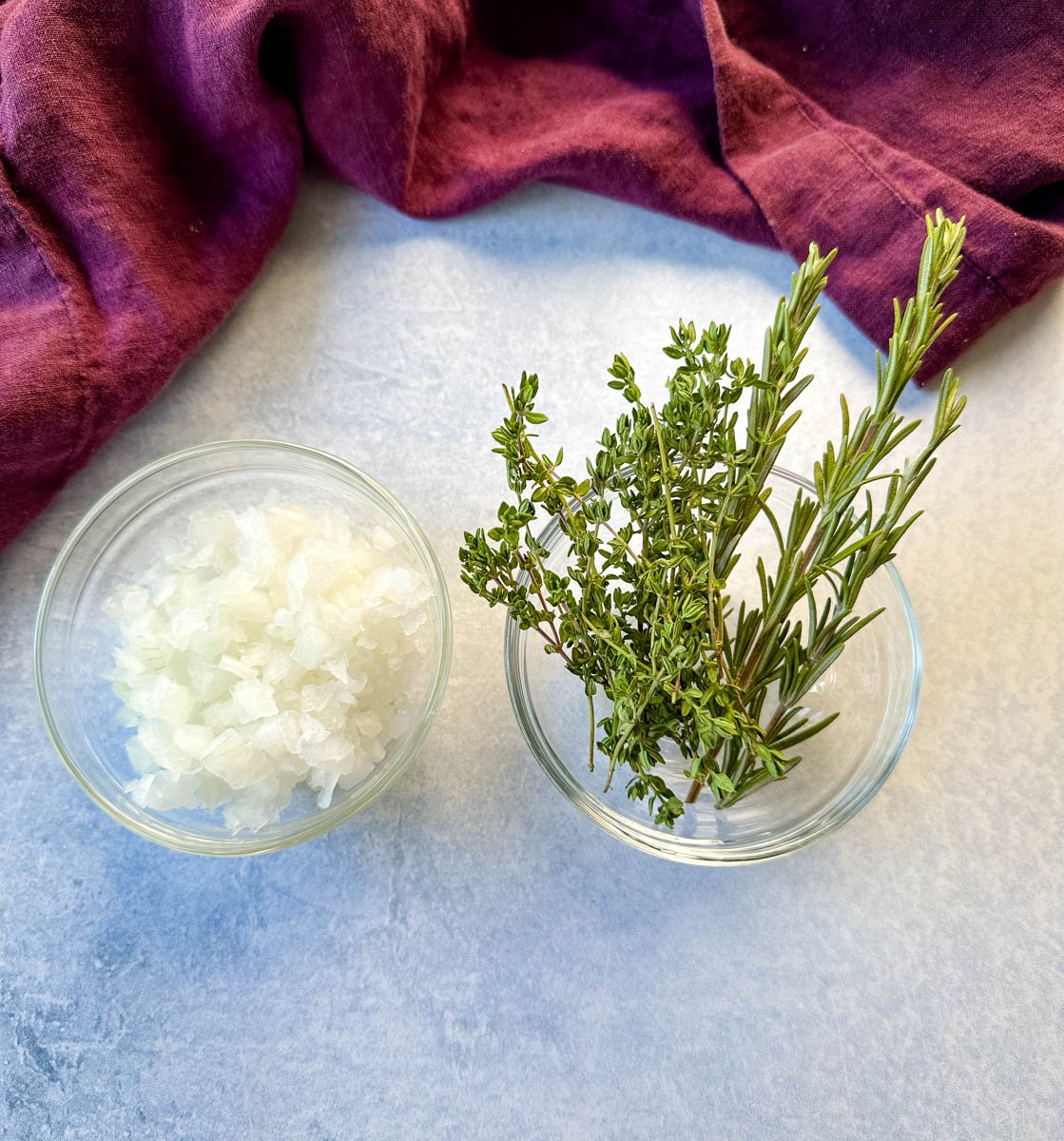
Garlic Butter Spices/How to Achieve Flavorful Crust
When you take butter (room temperature) and combine it with herbs and spices the mixture becomes compound butter. It will enhance the flavor, moisture, and texture of the roast.
As the meat cooks, the butter in the compound mixture will melt and coat the surface. This helps create a beautifully browned crust as the high heat interacts with the butter's milk solids and fats.
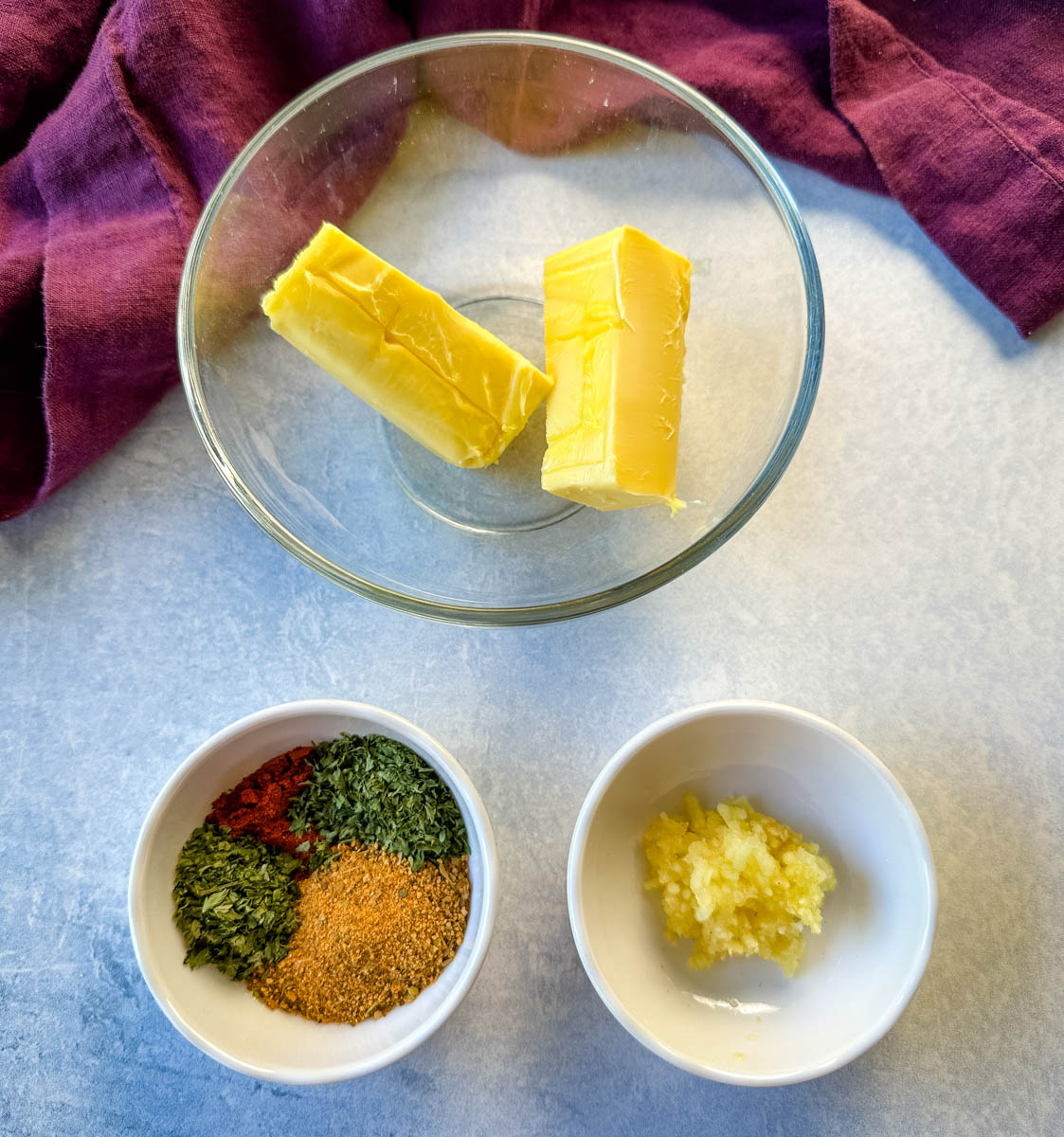
You will need
- Room Temperature Butter (Very important and makes for easy spreading along the outside of the meat.)
- Minced Garlic and Dried Parsley
- Spices (Creole Seasoning and Smoked Paprika or Onion Powder, Smoked Paprika, Salt, and Pepper)
- Fresh Herbs (Rosemary and Thyme)
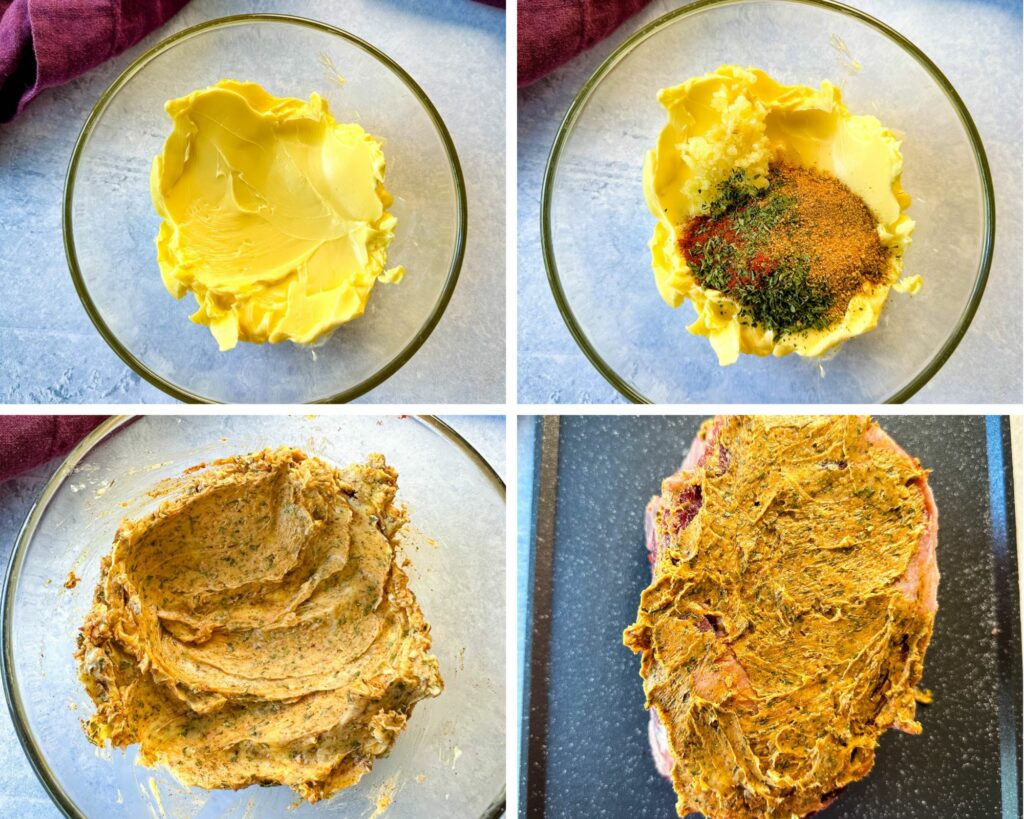
Sear the Roast
I like to accomplish a sear the easy way and that's by using high temperature in the oven and I use a cast iron which is perfect for searing. Bake the roast at 500 degrees for 20 minutes to create an outer layer crust, then adjust the temperature down to 325 degrees so the meat cooks low and slow.
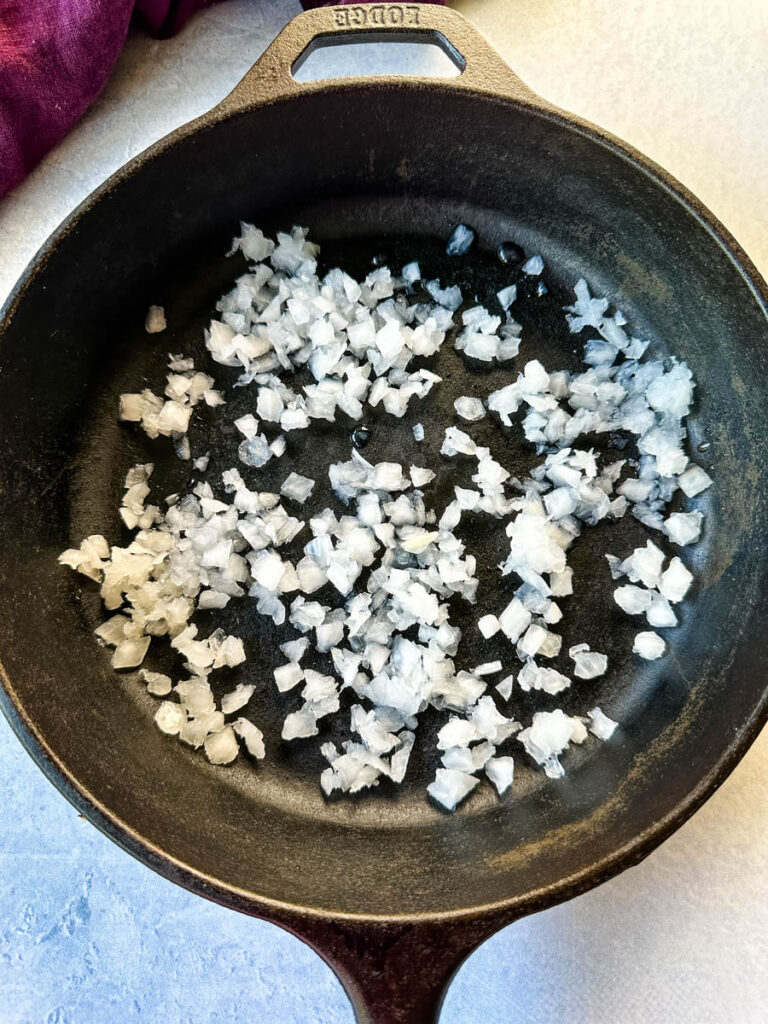
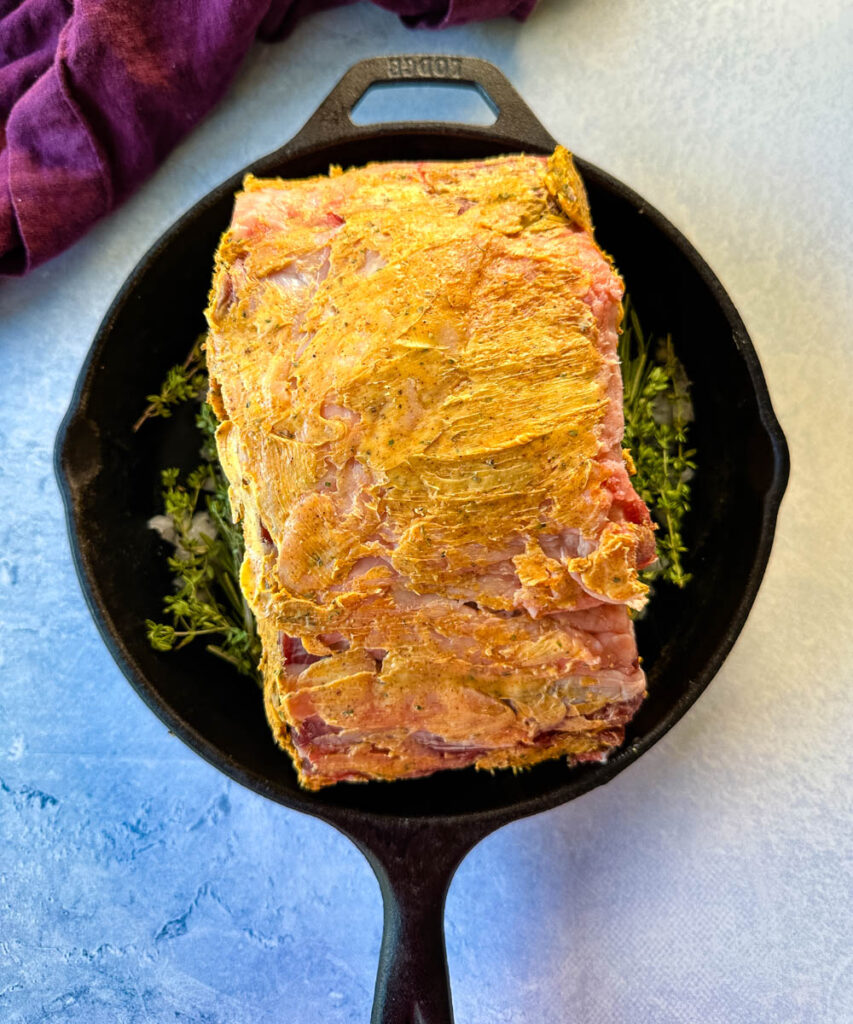
How to Make Garlic Butter Prime Rib
Detailed measurements and full instructions can be found in the recipe card at the bottom of this post.
- Remove the prime rib from the fridge and allow it to come to room temperature.
- Combine room temperature butter with herbs and spice.
- Pat the prime rib dry.
- Rub the entire prime rib roast with the seasoned herb butter.
- Bake.
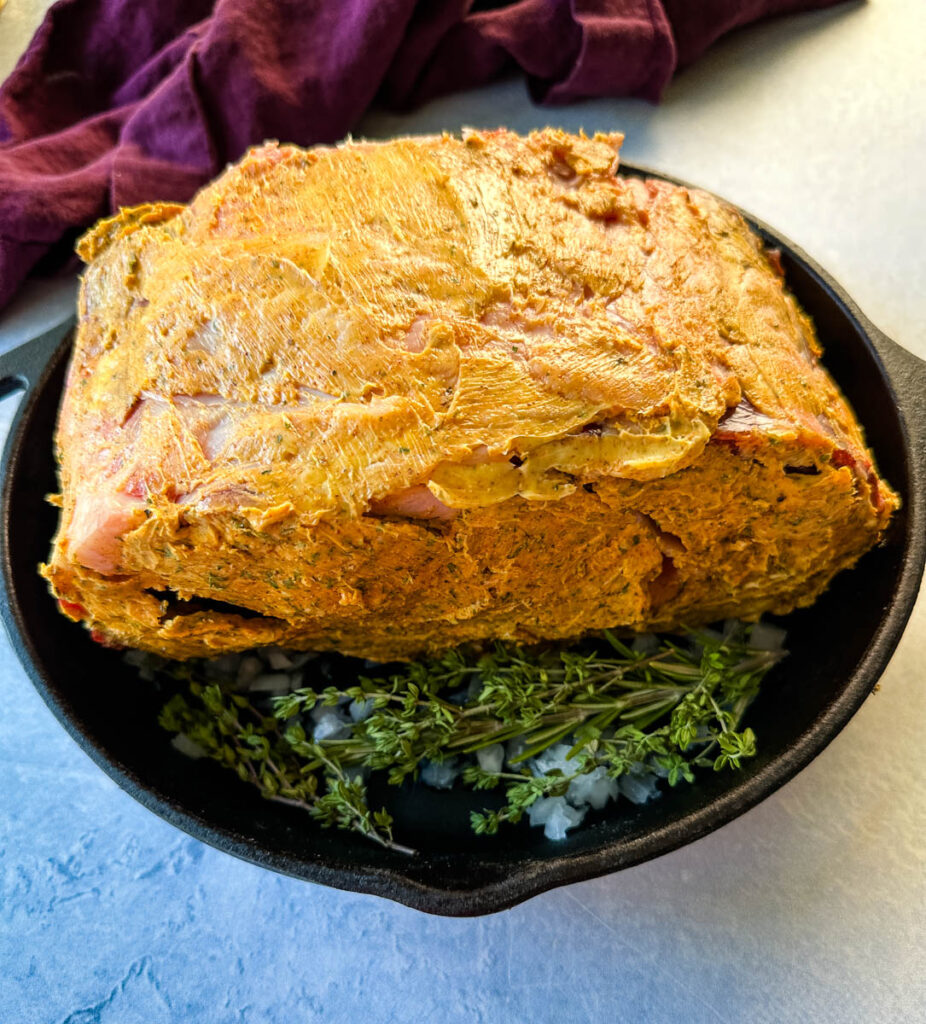
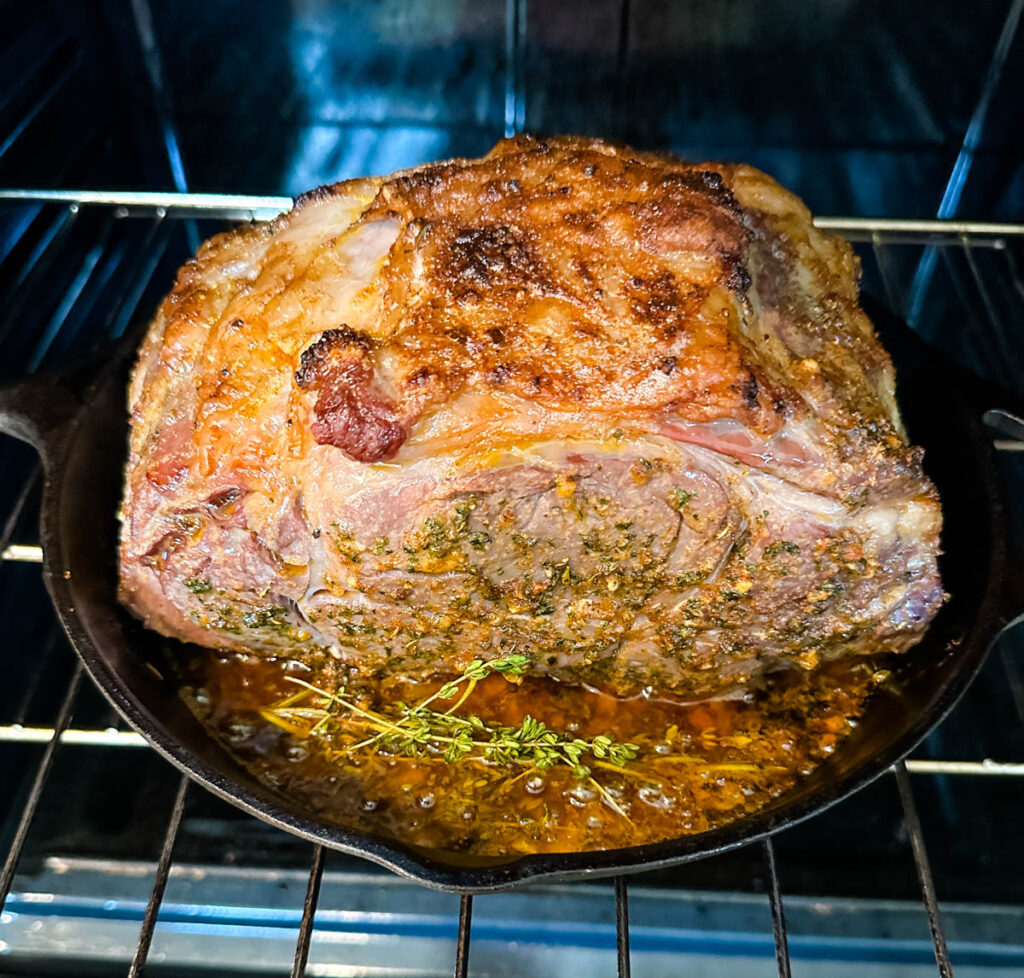
Want to save this recipe for later?
What Type of Pan to Use
I use a 10 inch cast iron skillet for 5 pound meat. You may need a 12 inch skillet for 7 pounds of meat. Here are options:
- Cast Iron Skillet or Pan: Cast iron is excellent for retaining and distributing heat evenly, which contributes to a well-cooked roast.
- Roasting Pan: A roasting pan is a versatile choice and it typically comes with a rack that elevates the meat off the bottom of the pan, allowing air to circulate for even cooking. Roasting pans are often made of heavy-duty materials like stainless steel or aluminum, which helps distribute heat evenly.
- Oven-Safe Skillet: If you have a heavy-duty oven-safe skillet, it can work well for searing and roasting.
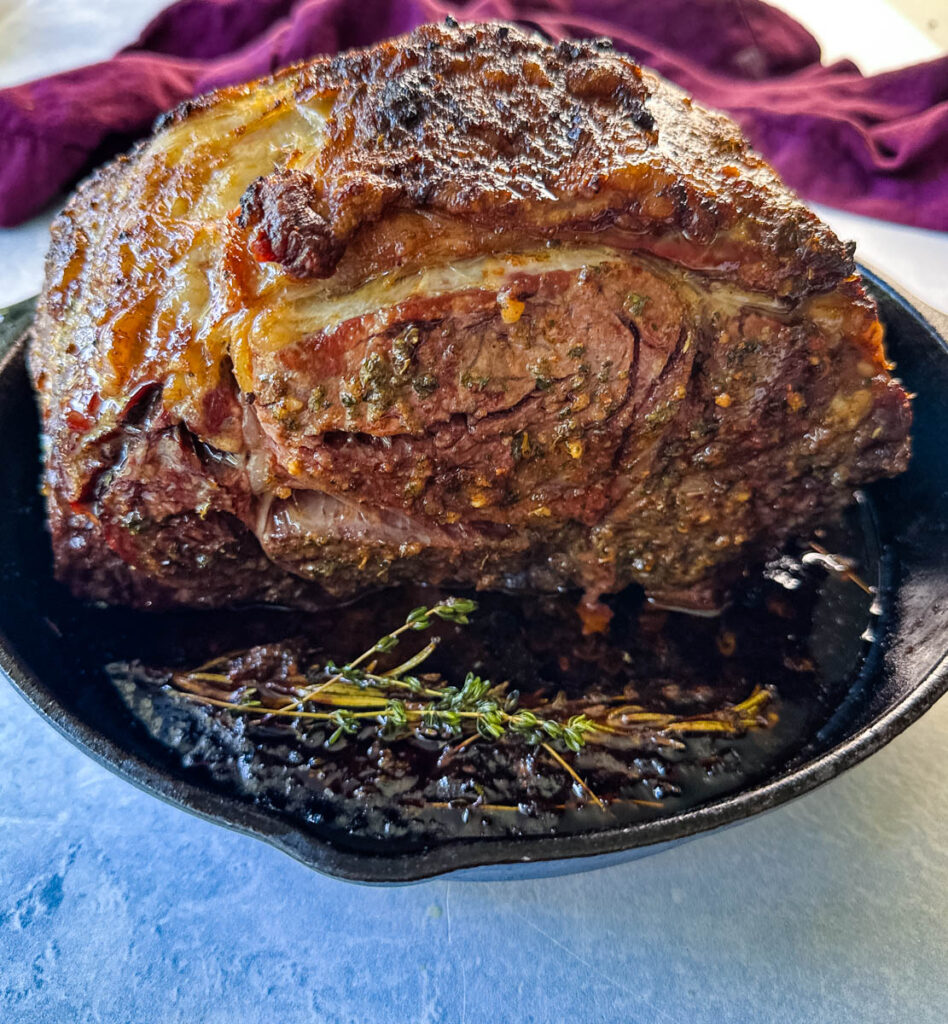
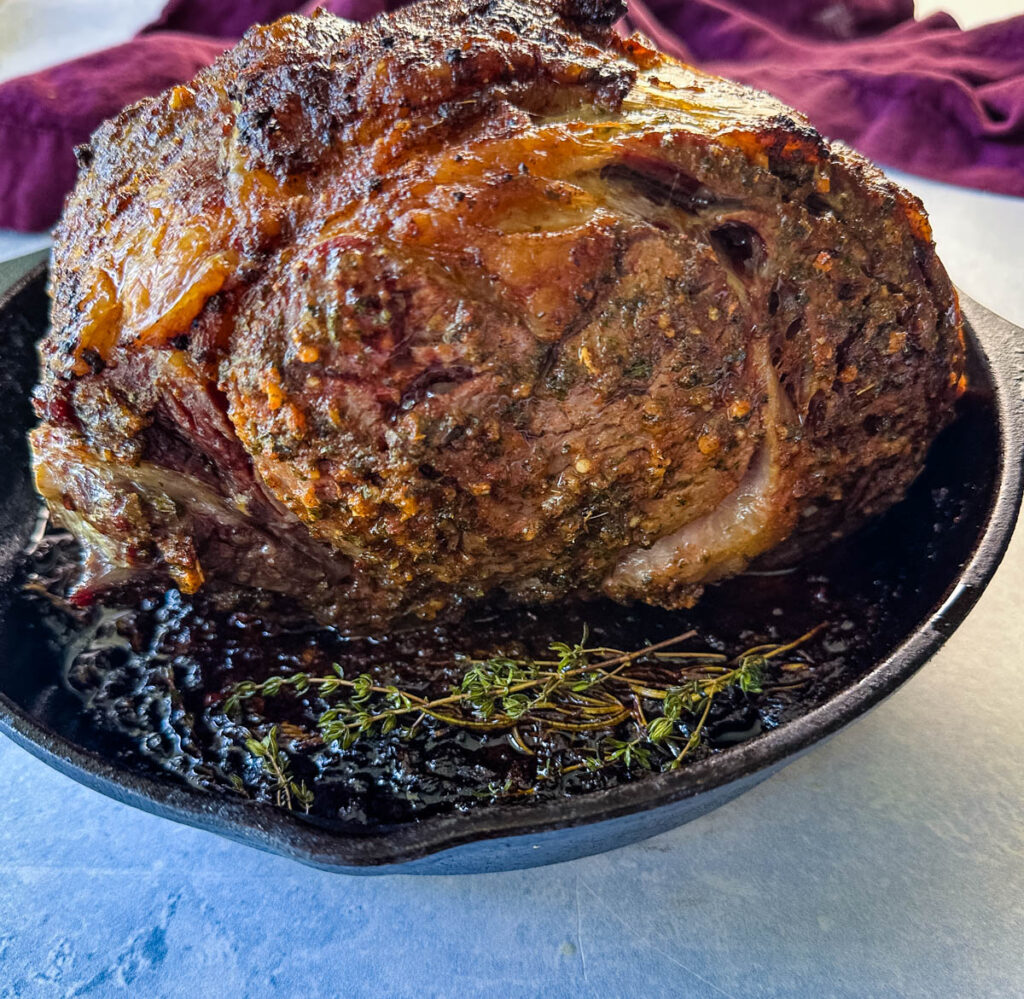
Prime Rib Cooking Time Chart
The cook time can vary based on factors such as the size of the roast, the cooking temperature, and whether you prefer your meat rare, medium-rare, or well-done. Here's a general prime rib cooking time chart to give you an idea of the approximate cooking times at different temperatures.
Keep in mind that these are estimated times and should be used as a guide. It's crucial to use a meat thermometer to ensure your prime rib is cooked to your desired level of doneness.
- Rare: 15-17 minutes per pound
- Medium-Rare: 18-20 minutes per pound
- Medium: 20-22 minutes per pound
- Well-Done: 22-25 minutes per pound
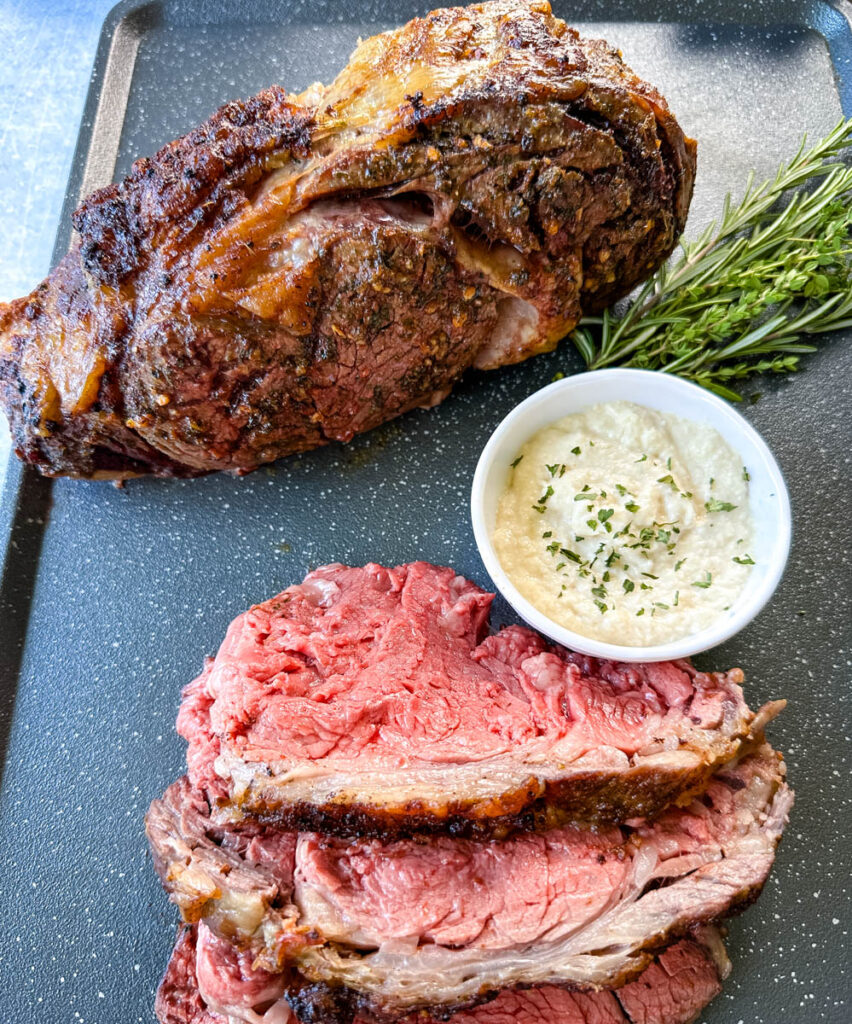
Internal Temperature
Always use a meat thermometer to test when the prime rib is done. Take the prime rib out of the oven a few degrees before it reaches the desired internal temperature due to carryover cooking. When you remove the roast from the oven, its internal temperature will continue to rise by a few degrees due to the residual heat within the meat.
| Doneness | Remove From The Oven Temp | Final Temp | Notes |
| Rare | 113-120 degrees | 120-129 degrees | Bright red center, lukewarm. |
| Medium Rare | 123-127 degrees | 130-134 degrees | Bright red center, pink edges, warm. |
| Medium | 128-135 degrees | 135-144 degrees | Pink and warm throughout. |
| Medium Well | 138-145 degrees | 145-154 degrees | Slightly pink center and warm throughout. |
| Well Done | 148-155 degrees | 155-164 degrees | Little to no pink. |
Allow the Meat to Rest
After removing the rib roast from the oven, you should allow it to rest for about 45 minutes to an hour before carving. During this resting period, the internal temperature will continue to rise, and the juices within the meat will redistribute, resulting in a juicier and more flavorful roast.
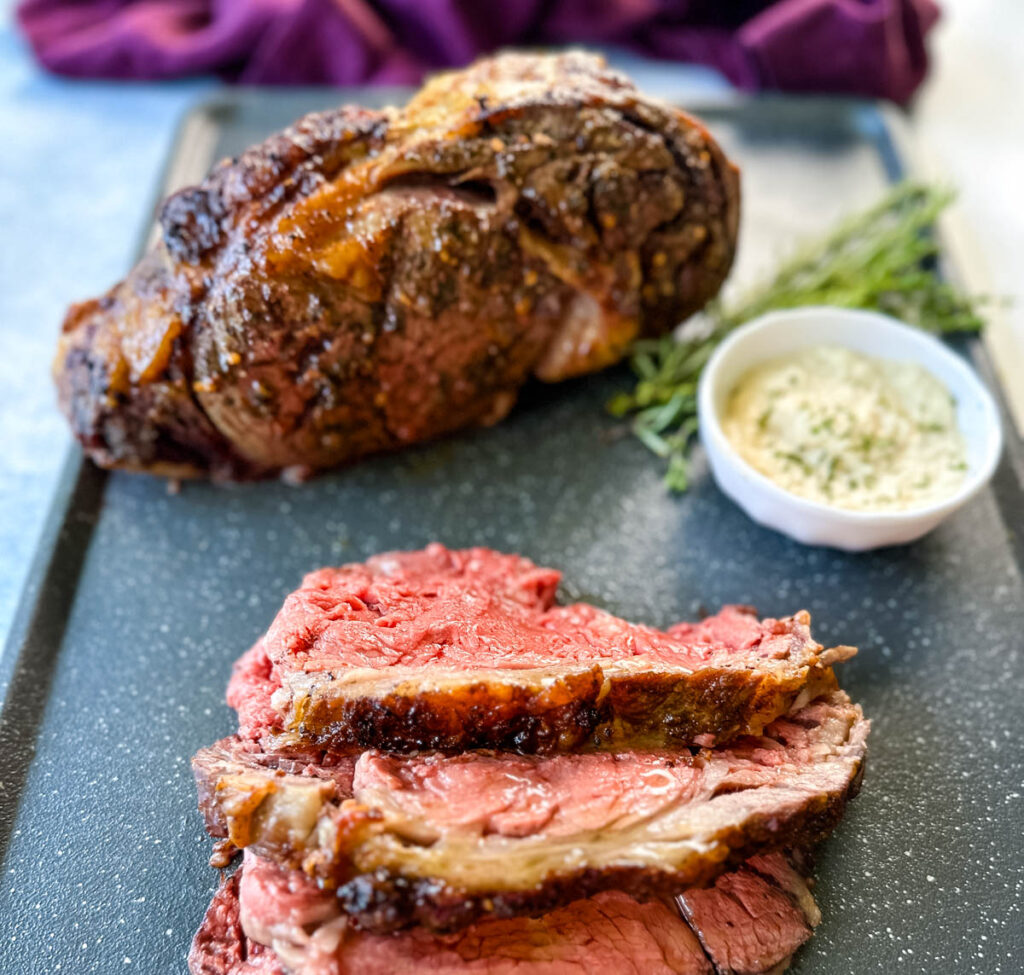
How to Carve
You will need a sharp knife and a cutting board.
- Locate the Bones: If you have a bone-in prime rib, identify the bones. Run the knife along the bones to remove them. You can keep the bones because they typically have meat attached and make great ribs.
- Begin Carving: Start by making a horizontal cut along the top (fat side) of the roast to create a flat surface. This will help stabilize the roast while you're carving.
- Slice Against the Grain: For each slice, position the roast with the fat side facing up. Slice against the grain, which means cutting perpendicular to the lines of muscle fibers. This will result in more tender slices.
- Choose the Thickness: Decide on the thickness of your slices. Typically, slices are about ½ to ¾ inch thick, but you can adjust based on your preference.
- Smooth Motion: Using a smooth and controlled motion, guide the knife along the roast to create the slices. Let the knife do the work rather than applying excessive pressure.
Overcooked Prime Rib
Keep a close eye and monitor the roast while it cooks. You don't want to overcook it. Overcooked meat will have an interior that is uniformly cooked but lacks the desired level of juiciness. The meat might have a pale color rather than the pinkish hue associated with medium-rare or rare doneness.
The texture will be dry, tough, and rubbery. If the internal temperature is a lot higher than the desired doneness level and exceeds 145 degrees for medium, it's likely overcooked.
How to Make Gravy/Au Jus Sauce
Keep those drippings from your pan! I add onions and fresh herbs to the pan while the prime rib cooks because it will make for an amazing homemade gravy. Check out our Prime Rib Au Jus Sauce recipe here.
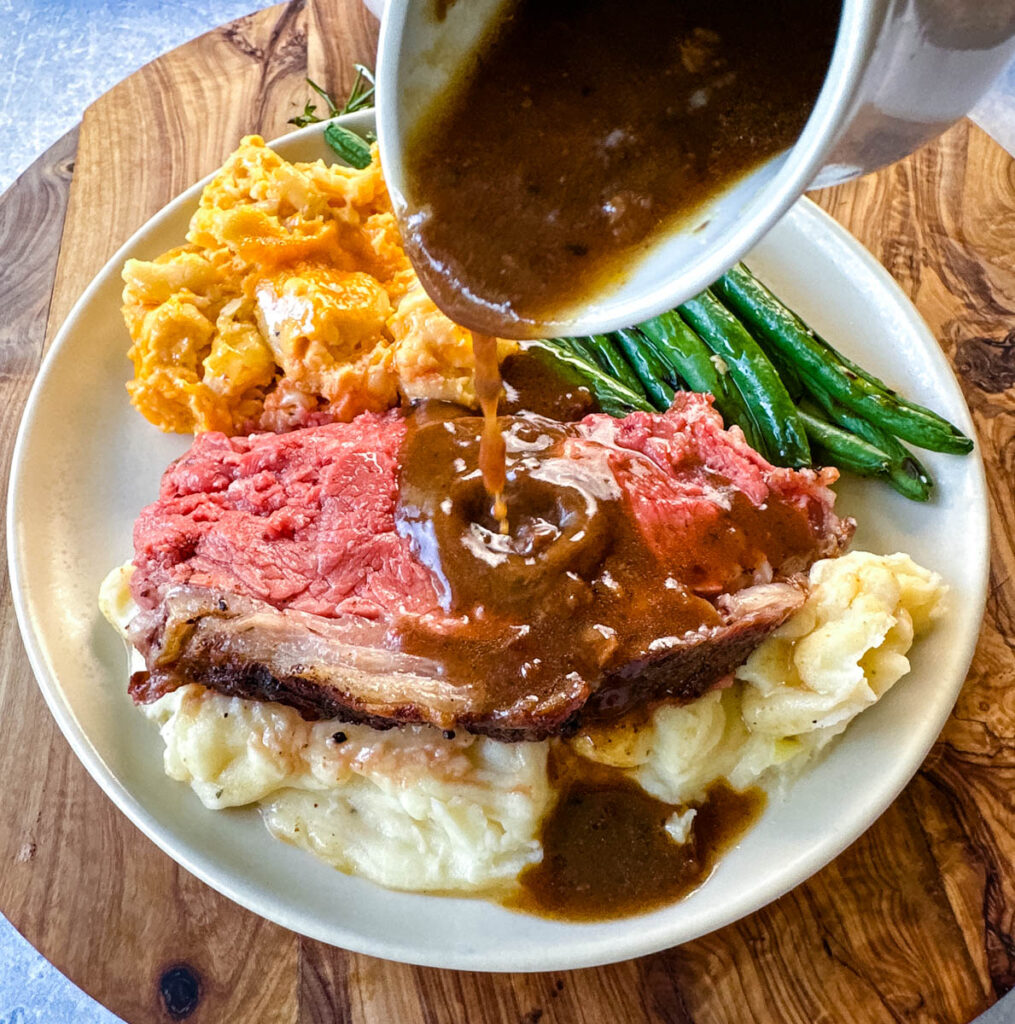
Do You Need Kitchen/Butcher's Twine
You don't have to use kitchen twine. I often do not. It can be useful if you need to secure the meat. The twine will help create a uniform shape which will assist in an even cooking process for the entire roast. This is something to consider if you have a very unevenly sliced roast.
Tying the roast will help ensure even cooking by preventing the outer layers from spreading too much, which can lead to uneven cooking.
Decide if you feel this is necessary in your situation.
If using it, hold the twine under the roast near one end, leaving enough excess twine on either side to tie a knot. Wrap the twine around the roast, positioning it between the ribs or around the meat to hold it together. Gently pull the twine snugly to secure the roast. Make sure it's not too tight to cause the meat to squeeze out from the twine. Tie a simple knot with the twine to secure it in place.

How to Store Leftovers
Sliced pieces are often easier to reheat and use in sandwiches or other dishes. Wrap the leftover prime rib tightly in plastic wrap, aluminum foil, or use an airtight container. Ensure that it's well-sealed to prevent exposure to air, which can cause the meat to dry out and absorb odors from the fridge. Leftover prime rib is best consumed within 3-4 days.
How to Reheat
My favorite way to reheat is in the air fryer at 350 degrees until warm. The stove also works well. Add butter, oil, or sauce/au jus to the pan to keep the meat moist while you heat it up.
I don't recommend the microwave. It can cause the prime rib to become unevenly reheated and potentially dry out. This method is best for small portions and should be used cautiously.
Freezer Tips
You can freeze the dish tightly covered and sealed up for to several months. Defrost overnight in the fridge.
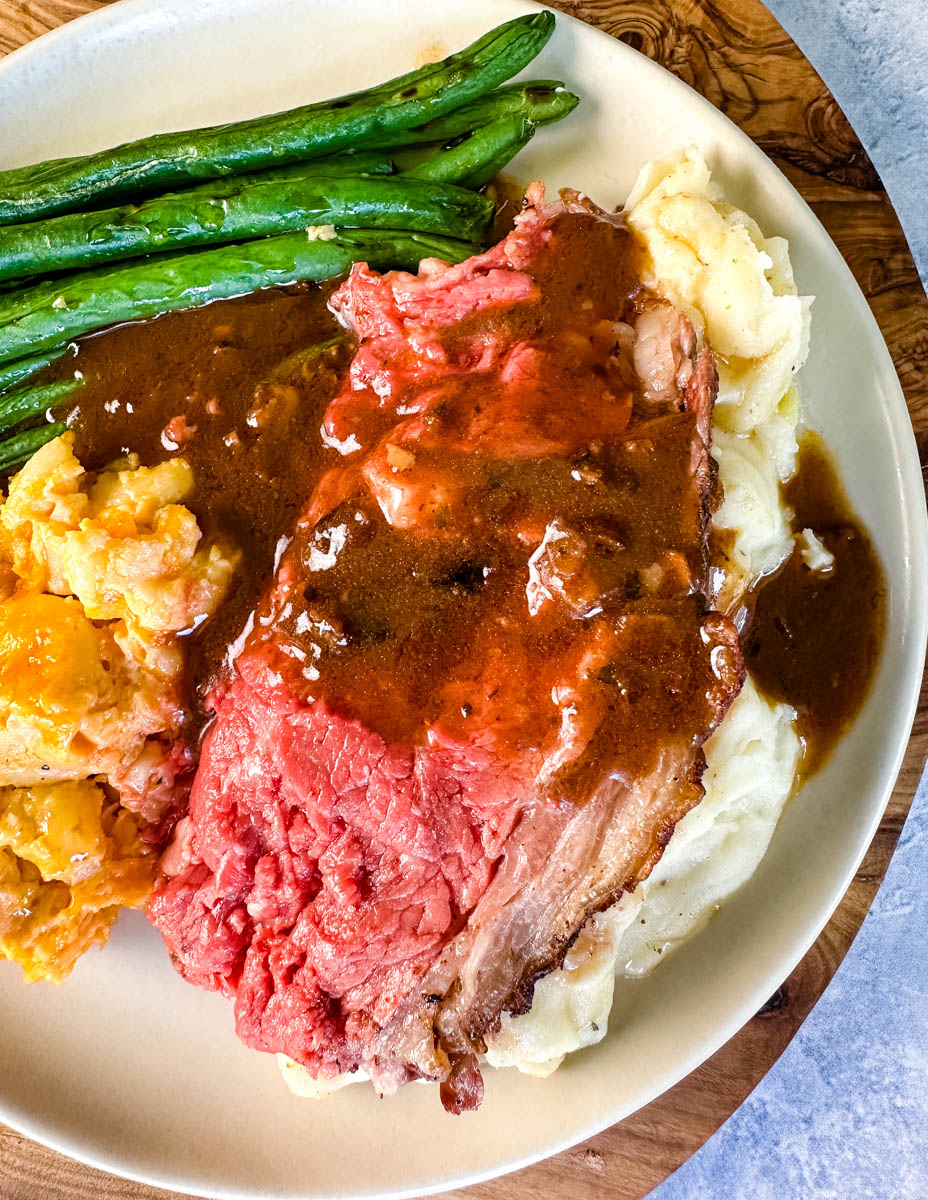
Pair With These Recipes
Green Bean Casserole with Bacon
Slow Cooker Crockpot Cheesy Potatoes
Au Gratin Potatoes with Bacon and Cheese
Slow Cooker Crockpot Mac and Cheese
Southern Cornbread Dressing with Chicken
Collard Greens with Smoked Turkey
French Dip Sandwich with Au Jus
Rotel Dip with Beef
More Main Dish Recipes
Smoked Duck
Southern Baked Ham
Braised Beef Chuck Short Ribs
Eye of Round Roast Beef
Beef Tips and Gravy
Cajun Turkey
Baked Turkey Wings
Steamed Lobster Tail
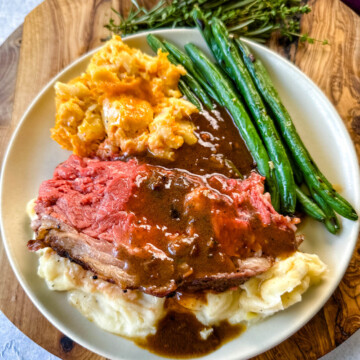
Garlic Butter Prime Rib (Bone-in or Boneless)
Want to save this recipe for later?
Ingredients
- 4-7 pound standing rib roast/prime rib Mine was about 5 pounds.
- kosher salt or sea salt To Taste
- ½ cup room temperature unsalted butter Use more as needed if necessary for your size prime rib.
- 1 tablespoon finely chopped parsley Fresh or dried.
- 6 garlic cloves Minced
- 2 fresh rosemary sprigs
- 3-6 fresh thyme sprigs
- ½ cup sliced or diced onions Optional; really only needed if you plan to make Au Jus/Gravy
Standard Seasoned Prime Rib
- 1-2 teaspoons smoked paprika
- 1-2 teaspoons onion powder
- salt and pepper to taste
Creole Seasoned Prime Rib
- 1-2 tablespoons Creole Seasoning Adjust to suit your taste and the size of your roast.
- 1 teaspoon smoked paprika
Instructions
- Remove the prime rib from the fridge and allow it to come to room temperature. This can take 2-3 hours depending on the size of the roast you have. Sprinkle salt onto each side of the prime rib. The salt will penetrate the meat as it comes to room temperature.
- Preheat the oven to 500 degrees.
- Combine the room temperature butter with the garlic, parsley, and spices. Stir to completely mix. (You will use the onions, rosemary, and thyme later).
- Pat the prime rib dry. Ensure it is completely dry, othewise you will have a hard time getting the butter and spices to stick.
- Rub the entire prime rib roast with the seasoned herb butter. Add the onions (optional) and herbs (rosemary and thyme) to the pan.
- Place the prime rib roast bone-side down and fat cap-side up in a cast iron skillet or roasting pan with rack. Having the fat cap side (the thick layer of fat on the outside of the meat) on top allows the fat to melt down into the prime rib as cooks for extra flavor.If you have a cut of meat without a fat cap, ensure the roast is placed bone side down.
- Place the pan in the oven for 20 minutes or for however long it takes for the exterior meat to form a crust. It may take a few minutes longer.
- Adjust the heat on the oven to 325 degrees. Continue to cook the prime rib until it reaches your desired level of doneness. Use a meat thermometer and remove the prime rib from the oven when it reaches the following:Rare: 113-120 degreesMedium Rare: 123-127 degreesMedium: 128-135 degreesMedium Well: 138-145 degreesWell Done: 148-155 degreesWhen you remove the roast from the oven, its internal temperature will continue to rise by a few degrees due to the residual heat within the meat.
- Allow the prime rib to rest for 45-60 minutes prior to slicing. During this time, the internal temperature will continue to rise, and the juices within the meat will redistribute, resulting in a juicier and more flavorful roast. If you slice too soon you will likely end up with dry meat.
Notes
Nutrition
Nutrition Data
Macros are provided as a courtesy and should not be construed as a guarantee. This information is calculated using MyFitnessPal.com. To obtain the most accurate nutritional information in a given recipe, you should calculate the nutritional information with the actual ingredients used in your recipe, using your preferred nutrition calculator. You are solely responsible for ensuring that any nutritional information provided is accurate, complete, and useful.

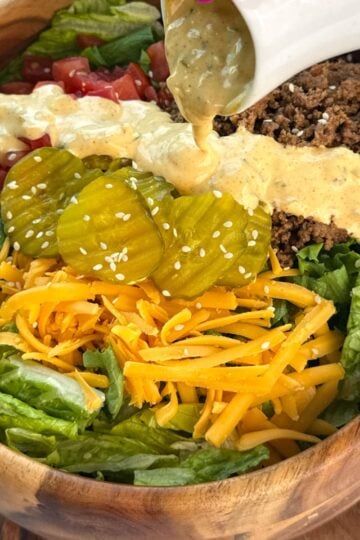
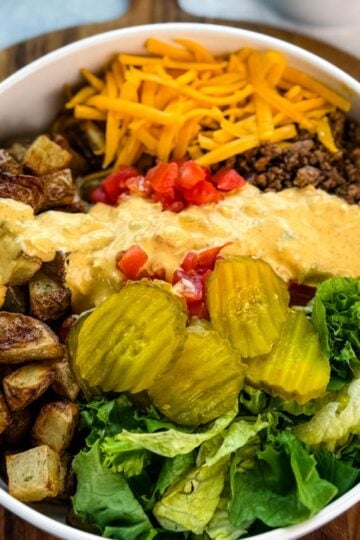
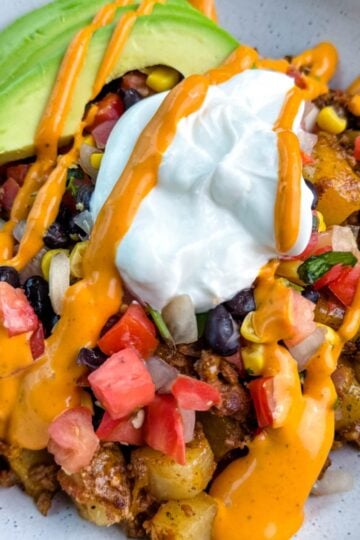
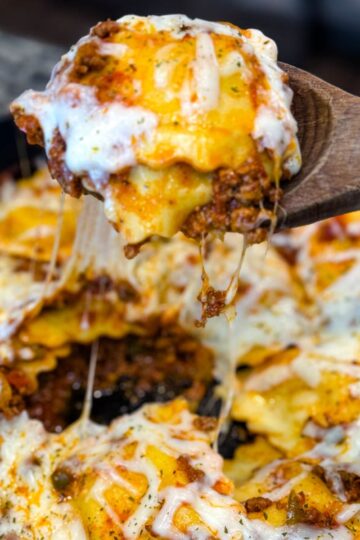
Brandy says
Made this for dinner when family was visiting, and it came out absolutely fantastic. It was such a hit! Thank for the great recipe!
staysnatched says
I'm glad to hear it was a hit!
Gina says
This garlic butter prime rib was perfection! Added some delicious sides and it was one amazing meal!
staysnatched says
Yay. So glad to hear it.